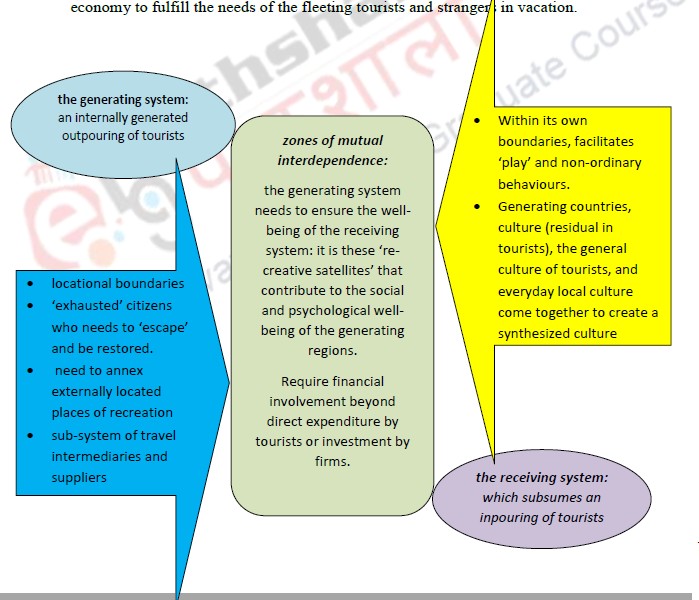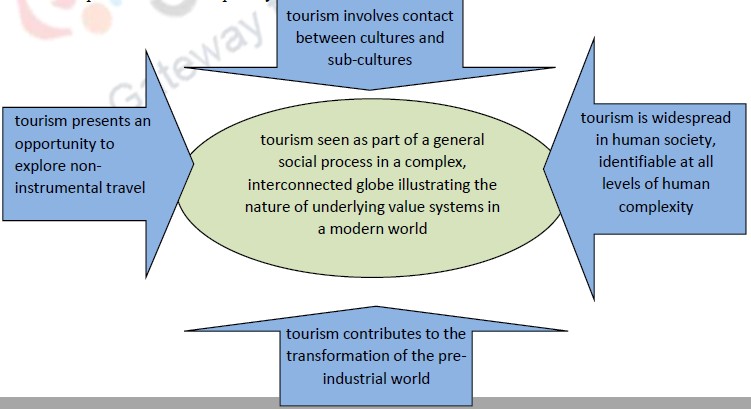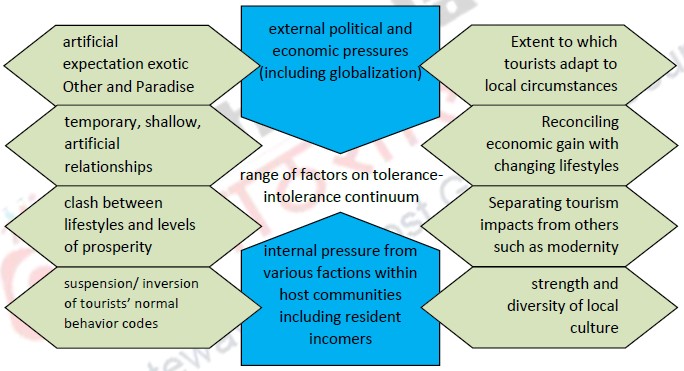Are you curious about how tourism impacts cultures and societies? The anthropology of tourism explores this fascinating intersection, offering insights into the complex relationship between travelers and host communities. SIXT.VN can help you navigate this dynamic landscape with expert travel advice and services that promote responsible and enriching experiences in Vietnam. Discover the cultural exchange, social changes, and economic impacts of tourism with SIXT.VN.
1. Understanding the Core of Anthropology
Anthropology, derived from the Greek words “anthropos” (human) and “logos” (study), is the scientific exploration of humankind. It posits that humans are shaped by both biological and cultural forces, inheriting traits that distinguish them within the animal kingdom. Anthropology delves into the origin, evolution, and diversity of humanity. Haviland (1990) identifies five central themes: the nature of culture, its role in survival, group formation, the quest for order, and the dynamics of change. Beyond these, applied anthropology uses this knowledge to tackle real-world issues, as Ember, Ember, and Peregrine (2002) note. While early anthropology focused on local communities, modern anthropologists study diverse societies globally, employing varied methodologies (Erisen 2008). Anthropology encompasses branches like Biological, Social-Cultural, Prehistoric, Linguistic, and Applied Anthropology, including the anthropology of tourism.
2. Defining Anthropology of Tourism
Humans have always been travelers. Tourism is now largely for pleasure. It is the ‘combination of multiple facts, which make this matter as a complex phenomenon and it means travelling to a place which is away from home staying there for a certain period of time’ (Smith 1989 and Przeclawski 1993:11). Tourism involves contact between cultures, making it an anthropological subject. Burns and Holden (1995) highlight the synergy between anthropology and tourism, both aiming to understand culture and human interactions.
Anthropology offers crucial insights into tourism, especially through ethnography, the acculturation model, and understanding tourism as just one aspect of culture change (Smith 1981:475).
Burns (1999: 67) suggests applying major anthropological themes to tourism studies, using a comparative framework, holistic approach (considering social, environmental, and economic factors), and in-depth analysis to understand the root causes of tourism.
Nash (1981) emphasizes that cross-cultural encounters and social transactions resulting from tourism are key to understanding it anthropologically. He notes initial resistance to recognizing anthropology of tourism as a distinct field, as tourism was often viewed as the domain of economists, geographers, or business managers. Anthropologists were hesitant to associate with tourists and initially underestimated the social-cultural significance of tourism.
3. Exploring the Theoretical Roots of Tourism Anthropology
The foundations of tourism anthropology are rooted in the work of social scientists like Emile Durkheim, Arnold Van Gennep, and Victor Turner. Durkheim, in The Elementary Forms of Religious Life (1915), noted society’s creation of sacred elements among ordinary ones, with rituals and religion enhancing social solidarity. Nelson Graburn (1989:24) applied Durkheim’s concept of the sacred to tourism, contrasting ordinary experiences with extraordinary ones.
Van Gennep (1960) studied life cycle transformations and rites of passage, which include separation, liminality, and incorporation. Separation involves detaching from society, liminality is a period of seclusion, and incorporation marks reintegration with a new status. Victor Turner (1967:30) expanded on this with his concept of transitions. He noted that social rituals imbue norms and values with emotions, while basic emotions are elevated through these norms. Behaviors unacceptable in normal life may be accepted in special contexts, such as alcohol consumption during ceremonies.
A traveler undergoes similar phases: separation before departure, liminality during the journey, and incorporation upon returning home. Tourism can be seen as sacred, like a totem, symbolizing social and economic freedom.
4. Is Tourism a Form of Imperialism?
Tourism can be seen as urban culture encroaching on rural culture, unintentionally damaging it. Nash (1989:37) identifies themes that influence tourism from a social science perspective (Burns 1999:74):
- Tourism development should consider productive centers that enable leisure tourism.
- Tourism can create control by generating regions over receiving regions, leading to a form of imperialism.
- Demand and supply relationships lead to infrastructure like swimming pools and fast food that aren’t natural or traditional.
- Unequal transactions develop between locals and tourists, creating ‘hosts’ and ‘guests’ dynamics.
- Economic disparities can lead to feelings of superiority among tourists.
- In less economically developed countries, tourism may overshadow the general economy to meet the needs of tourists.
 Tourism as a Form of Imperialism
Tourism as a Form of Imperialism
5. Key Themes in the Anthropology of Tourism
Jafar Jafari links anthropology’s key themes—culture, survival, group formation, order, and change—with tourism (Burns 1999: 75). He divides the tourism system into generating regions (tourist sources) and receiving areas (tourist destinations), placing them in a context of mutual interdependence.
Industrialized countries depend on recreational areas to provide ‘recreational goods’ to their citizens, leading them to explore other locations. This anthropological perspective differs from those of political scientists.
6. Why Study Tourism Anthropologically?
Anthropologists find ample scope in studying tourism because it provides opportunities to interact with various cultures and sub-cultures. It helps in understanding the process of cultural changes. Tourism occurs worldwide, regardless of cultural complexity.
 Necessity of Anthropological Study of Tourism
Necessity of Anthropological Study of Tourism
Tourism also allows for non-instrumental travel, serving recreational purposes. It transforms pre-industrial societies through contact with industrialized ones. Studying tourism helps reveal underlying value systems in complex, interconnected societies, viewing it as part of a broader social process.
7. Different Approaches in the Anthropology of Tourism
Malcolm Cricks (Selwyn 1996) categorizes the study of tourism anthropology into three areas:
- Semiology: Explores meaning and the relationship between images and symbols, as described by Ferdinand de Saussure. Tourists assign significance to places, cultures, or objects during their visits, even if these are inherently non-significant.
- Political Economy: Examines power and control, and the factors that drive tourism development in specific areas, focusing on political aspects and the economics of tourism-related events.
- Social and Cultural Change: Studies how spaces, cultures, and objects become commodified due to interactions between generating and receiving areas.
8. Key Issues in Tourism Anthropology
Burns (1999:89) identifies four main issues:
- Tourism as religion and ritual: Is tourism a modern form of religion or pilgrimage?
- Tourism as social change: Does tourism damage culture?
- Tourism as symbolism and mythology: Can tourism offer ‘Paradise on earth’?
- Tourism in local-global relationships: Will tourism bring development?
8.1. Tourism as Religion and Ritual: Is Tourism a Modern Form of Pilgrimage?
Pilgrims visit sacred places, undergo rituals, and then return home, which signifies separation from daily life. These journeys foster relationships with other pilgrims, regardless of their background. Similarly, tourism may involve rituals and provide mental satisfaction. Burns (1999:91) sees pilgrimage as paying tribute to culture, but notes that not all tourism allows for ‘role reversal,’ especially in structured package tours.
These types of tourism may have negligible differences from daily life and can be difficult to define a tourism and tourist (Burns 1999:92). Tourism offers insights into cultural perspectives, suggesting that in-depth ethnographic research is required to confirm tourism as a pilgrimage.
8.2. Tourism as Social Change: Does Tourism Damage Culture?
Tourists from diverse cultural backgrounds inevitably cause cultural exchanges between ‘hosts’ and ‘guests’, which may be beneficial or detrimental. The impact of tourism on culture depends on the following factors (Burns 1999:95):
- Type of tourists
- Length of stay, attitudes, and expectations
- Number of tourists
- Length of season
- Role of ‘culture-brokers’
The ‘culture broker’ or ‘marginal men’ refers to innovative mediators who can manage local culture for tourist consumption without compromising its identity (Smith 1977, 1982:163). Additional pressures on host-guest relationships are illustrated in the following figure, as identified by Burns (1999: 96).
 Pressures on Host-Guest Relationships
Pressures on Host-Guest Relationships
Tourists primarily seek enjoyment and holidays, not necessarily interaction with locals. Burns (1999: 96) identifies other areas influencing host-guest relationships, including:
- The demonstration effect
- Internal and external exchange
- Acculturation and cultural drift
- Cultural symbiosis and assimilation
8.2.1. The Demonstration Effect
This effect involves local people imitating tourists, who are often stereotyped as belonging to ‘superior’ cultures and affluent families. Young people may emulate the lifestyles, clothing, and language of tourists. While tourism is a factor, other influences include modernization and globalization.
8.2.2. Internal and External Exchange
Cultures are subject to change through internal and external processes (Burns 1999: 97). Internal changes result from innovation and creativity, occurring more slowly in simpler societies than in complex ones. External changes stem from modernization, westernization, and economic, political, cultural, and environmental pressures. Tourism serves as a channel for external changes.
8.2.3. Acculturation and Cultural Drift
Acculturation is a cultural exchange process where cultures borrow ideas and materials from each other, but this borrowing is unequal. The more complex society tends to dominate the simpler one. Cultural drift refers to temporary cultural changes. The duration of contact influences permanence; prolonged contact leads to lasting changes, while brief encounters result in temporary shifts.
8.2.4. Cultural Symbiosis and Assimilation
These terms relate to acculturation, describing interactions between cultures with equal economic status. Cultural symbiosis describes mutual influence, while assimilation refers to convergence.
8.3. Tourism as Symbolism and Mythology: Can Tourism Offer ‘Paradise on Earth’?
Hotels are often named with ‘paradise’ to symbolize heavenly features. Graham Dann (1996) identifies four types of paradise in tourist contexts, after studying over 5,000 images across 1,500 pages in British holiday brochures:
- Paradise contrived: no people; natives as scenery; natives as cultural markets
- Paradise confined: tourists only – tourist ghetto
- Paradise controlled: limited contact with locals: natives as servants, natives as entertainers, natives as vendors
- Paradise confused: further contact with locals, attempt to enter locals-only zones: natives as seducers, natives as intermediaries, natives as familiar, natives as tourists, tourists as natives
This process depicts tourist sites as paradise. Brochures rarely show hosts and guests together, often portraying locals as creators of paradise. In rural areas, locals are shown welcoming guests into their families, while in urban settings, they greet tourists with smiles. Both aim to reassure tourists that they are not alone.
8.4. Tourism in Local-Global Relationships: Will Tourism Bring Development?
Tourism drives the global economy and profoundly affects people’s lives, and anthropologists play a crucial role in it. While tourism can promote development, local-global relationships must be considered, as local people contribute to economic potential. Anthropological fieldwork and observation can enrich tourism systems, and recognition of social institutions should be contextualized with anthropological insights for developmental processes. A bottom-up approach, integrating local perspectives, is more beneficial.
9. Exploring Vietnam with SIXT.VN
SIXT.VN offers expert guidance and services to make your trip to Vietnam both enjoyable and culturally enriching. Whether you’re a solo traveler or a family, SIXT.VN provides services tailored to your needs:
- Customized Itineraries: Tailored to your interests and schedule.
- Airport Transfers: Safe and convenient transportation.
- Hotel Bookings: Options for every budget and preference.
- Tour Bookings: Explore famous sites with ease.
- Flight Assistance: Find the best prices and schedules.
- Expert-Led Tours: Discover Hanoi with professional guides.
Vietnam is a treasure trove of cultural experiences. To truly appreciate its beauty, consider these immersive activities:
- Hanoi Old Quarter: Wander through historic streets.
- Ha Long Bay: Cruise among stunning limestone karsts.
- Hoi An Ancient Town: Explore tailor shops and lantern-lit streets.
- Sapa Trekking: Discover rice terraces and ethnic villages.
SIXT.VN understands the challenges travelers face, such as planning difficulties, language barriers, and finding reliable services. We address these by offering comprehensive support for all your travel needs, ensuring a hassle-free experience.
10. Contact SIXT.VN Today
Ready to explore Vietnam? Let SIXT.VN take care of your travel arrangements.
Address: 260 Cau Giay, Hanoi, Vietnam
Hotline/Whatsapp: +84 986 244 358
Website: SIXT.VN
Book your airport transfer, hotel, tours, and more with SIXT.VN and experience the best of Vietnam. We offer competitive rates, reliable service, and unparalleled customer support. Contact us today to start planning your dream vacation.
Frequently Asked Questions (FAQs)
1. What is the anthropology of tourism?
The anthropology of tourism is the study of the impacts of tourism on cultures and societies, examining the interactions between tourists and host communities.
2. How does tourism affect local cultures?
Tourism can lead to both positive and negative cultural changes, including cultural exchange, commodification, and the alteration of traditional practices.
3. What are the main areas of study in tourism anthropology?
Main areas include semiology (study of meanings), political economy (power structures), and social/cultural change.
4. What is cultural commodification in the context of tourism?
Cultural commodification refers to the process where aspects of a culture are turned into products or services for tourists, often altering their original meaning.
5. How can tourism be more sustainable and culturally sensitive?
Sustainable and culturally sensitive tourism involves respecting local traditions, supporting local economies, and minimizing environmental impact.
6. What role do “culture brokers” play in tourism?
Culture brokers are mediators who manage local culture for tourist consumption, balancing preservation and commercial interests.
7. What are some ethical considerations for tourists?
Ethical considerations include respecting local customs, avoiding exploitation, and supporting sustainable tourism practices.
8. How does SIXT.VN support responsible tourism in Vietnam?
SIXT.VN promotes responsible tourism by working with local communities, offering eco-friendly tours, and educating travelers on cultural sensitivity.
9. Can tourism be a form of modern-day imperialism?
Yes, if it leads to economic exploitation, cultural dominance, or unequal power dynamics between tourists and host communities.
10. What are some examples of positive impacts of tourism?
Positive impacts include economic development, cultural preservation, and increased awareness and appreciation of different cultures.



